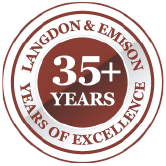Home » About Our Chicago Law Firm » Car accident attorney » Chicago T-Bone Accident Lawyer


T-bone car accidents, also known as side-impact collisions, are unique. Unlike rear or front-end collisions, only a door and a window separate the colliding vehicle from the victim. This is a high-risk situation that can result in death.
The door and/or window could break as the other vehicle hits the
victim’s car. This increases the chance of severe injuries and long-term trauma for the victim.
It may seem as though the vehicle that T-bones the other car is at fault for the accident. However, this isn’t always the case. Sometimes, the driver who is hit is found responsible for the accident due to an illegal maneuver or recklessness. Alternatively, a third party could be found at fault for a Chicago T-bone car accident. Manufacturers could be liable for faulty parts or government officials could be at fault for not posting proper road signs.
Fault becomes more complex in Chicago due to Illinois’ comparative negligence statute. This argument allows both parties involved in an accident to be partially at fault while still collecting damages. This could mean that defective brake pads led to an accident, but if the victim hadn’t been texting they could have taken evasive maneuvers.
The complicated matter of determining fault in a T-bone car accident is best left to professionals. The expert attorneys at Langdon & Emison have over 30 years of experience taking cases like these to trial. Let us help you with your claim today.
A side-impact collision occurs when a car impacts the side of another vehicle in a collision, forming a “T” shape. These accidents can also occur at an angle.
T-bone accidents are most likely to occur at an intersection where one or more drivers are not obeying traffic signals or are driving recklessly. For example, when a driver runs a red light or makes an illegal turn. However, other factors such as hydroplaning on ice can cause a driver to lose control and hit another vehicle in a side-impact collision.
Be mindful of the following causes of Chicago T-bone car accidents:
The severity of T-bone car accident injuries varies depending on your location in the car. The passenger closest to the point of impact will suffer worse injuries than those elsewhere in the car.
For example, if a car is hit on the driver’s side, then the driver and the passenger behind the driver have the highest risk for injury. Everyone in the vehicle may suffer some injury, such as whiplash or a contusion, but those two individuals are more likely to suffer spinal or traumatic brain injury.
Side-impact collisions cause some of the most severe injuries, even if cars are driving slowly. This is because most cars are outfitted with front and rear safety features, but most vehicles lack side-impact airbags or any other form of protection from side impact. The door and window are the only things standing between a car and your body in these types of accidents.
Chicago T-bone car accidents can result in a variety of injuries that are affected by the speed of the vehicles, the design of the car and its safety features, if the victim is wearing a seatbelt, and the angle at which the vehicle was hit. Further circumstances, such as if the car is in a multi-car crash, if the impact causes the car to roll over, and the location of the accident play significant roles in the severity of the victim’s injuries.
In 2018, Cook Country was host to 48% of the traffic accidents in Illinois. Our car accident lawyers in Chicago do not understate the significance of this statistic.
Although some accidents are minor and only involve property damage, a large number of car accident injuries are reported annually. These range from minor injuries like bruising or small cuts. However, severe injuries can affect someone’s quality of life permanently and even force them to leave their job due to chronic pain.
Turning accidents, including T-bone accidents, resulted in over 12,000 injuries and 79 deaths in Illinois in 2018. These accidents are the result of drivers not obeying traffic signs, not checking their blind spots, and driving recklessly because they are in a hurry. While they don’t intend to injure others, these drivers are putting lives at risk by failing to obey proper traffic laws.
Chances are, if you haven’t been injured in a car accident in Illinois, someone you love has been. That’s why the lawyers at Langdon & Emison have made it our duty to protect you and your loved ones from negligent drivers. Our car accident attorneys are working daily to ensure safer roads for everyone in Chicago.
Drivers must be aware of the types of car accidents that can occur and how to avoid them. It is important to be educated on what can happen on the road and how you may be able to prevent accidents. It could save your life or the lives of those you love.
Take these steps to reduce the risk of suffering a Chicago t-bone car accident:
Since most side-impact collisions occur at intersections, these are the first places to be on high alert. Ensure you obey signs to stop, such as flashing red lights and yellow lights. Do not speed through yellow lights.
Before turning, be sure to check your blindspot. You may miss a car that is trying to turn or pass you, which could result in a serious injury for both of you.
It may be tempting to roll through stop signs to save a few seconds on your commute, but don’t. Coming to a complete stop gives you the time to judge what other cars are going to do in the intersection and ensures that they have enough time to take their turns.
This step is about judging your surroundings before you take action. Scan all three lanes of the intersection in front of you before you enter it, even if you have the green light. Do not assume that other cars are going to obey lights.
Driving up as far as you can puts you at risk if the car behind you were to rear-end you. This could drive you into the intersection and cause a side-impact or multi-car collision. Leave yourself some room in case you need to take evasive maneuvers to avoid being rear-ended.
Speed is one of the most common factors in car accidents. Maintaining a safe speed and distance from other cars will keep you safer on the road. It will allow you the time to take evasive maneuvers and to judge scenarios ahead of you.
If you have to drive on icy roads or when visibility is reduced, be sure to drive slowly, approach turns with caution, and be prepared to brake.
Langdon & Emison wants Chicago’s roads to be safe for all drivers. That’s why we work tirelessly to help victims of T-bone car accidents get the compensation that they deserve for the trauma they suffered. We protect our clients from greedy insurance companies who try to pay insufficient sums and other drivers attempting to shift the blame.
Call (866) 931-2115 today to speak with one of our expert car accident lawyers in Chicago. Get a free assessment of your case to see how we can benefit you.

When it matters, we'll be there.
"*" indicates required fields

